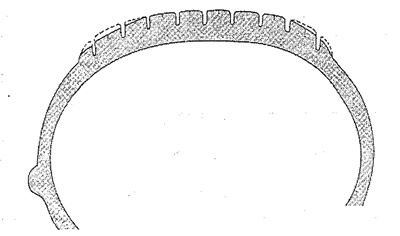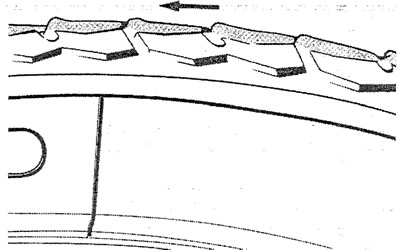First of all, you need to monitor the tire pressure 1 check it at least once every 4 weeks.
Check pressure only on cold tires. Tire pressure rises noticeably when tires heat up from fast driving. In this regard, it is impossible to bleed the pressure on warm tires.
With increased tire pressure, the middle part of the tread wears out faster, because. as the pressure increases, this part bends more strongly.
With reduced tire pressure, the side surfaces adhere more strongly to the road, i.e. edges of the tread, and the middle bends more inward. Because of this, the edges of the tread wear out more.

Slightly more wear on the front wheels of a tire compared to the middle of the tire is normal. At the same time, due to the slope of the road, the edges of the tires that are closer to the center of the road (left wheel outside; right wheel inside) may be more worn out.

Serrated tread wear is usually the result of overloading the vehicle.
Incorrect wheel alignments and imbalances create typical tire wear patterns that need to be looked at when diagnosing problems.
